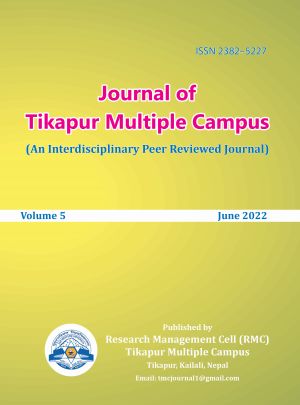Growth and Yield Performance of Potato Clones under Different Planting Dates
DOI:
https://doi.org/10.3126/jotmc.v5i1.46525Keywords:
Delayed planting, genotype, potato tuber size, unmarketable tuberAbstract
Potato (Solanum tuberosum L.) is the fourth most important crop of Nepal. However, variety and planting methods have been catered for its low productivity in the country. A field trial was conducted at Institute of Agriculture and Animal Science, Lamjung Campus, Nepal from October 2016 to February 2017 to identify the suitable planting time and the best genotype. The trial was laid out in two factorial RCBD with three replications. Planting factors included four planting dates (5th October, 20th October, 4th November and 19th November), while genotypes were two potato clones (Khumal Seto and Kufri Jyoti). The result revealed that the mean effect of planting date and clones both significantly affected percentage emergence, plant height, number of leaves/plant, number and weight of tuber/plant. The maximum yield was obtained from 5th October planting (31.55 t/ha) which was statistically similar to 20th October planting (30.94 t/ha), but the lowest yield was found on 19th November (22.27 t/ha) and was at par with 4th November (22.77 t/ha). The yield of clone Khumal Seto (27.68 t/ha) was at par with Kufri Jyoti (26.09 t/ha). However, interaction effect of two factors significantly influenced percentage emergence, plant height and number of small size (<25 g), medium size (25-50 g) and large size tubers (>50 g), but had no significant difference on overall yield. Delayed planting (19th Nov) of both clones produced the highest percentage of small size unmarketable tuber number. Thus, planting of both clones either on 5th October or 20th October helps to maximize the productivity.
Downloads
Downloads
Published
How to Cite
Issue
Section
License
Copyright (c) 2022 Ganesh Lamsal, Amit Khanal, Lal Prasad Amgain

This work is licensed under a Creative Commons Attribution-NonCommercial 4.0 International License.
This license enables reusers to distribute, remix, adapt, and build upon the material in any medium or format, so long as attribution is given to the creator. The license allows for commercial use.




